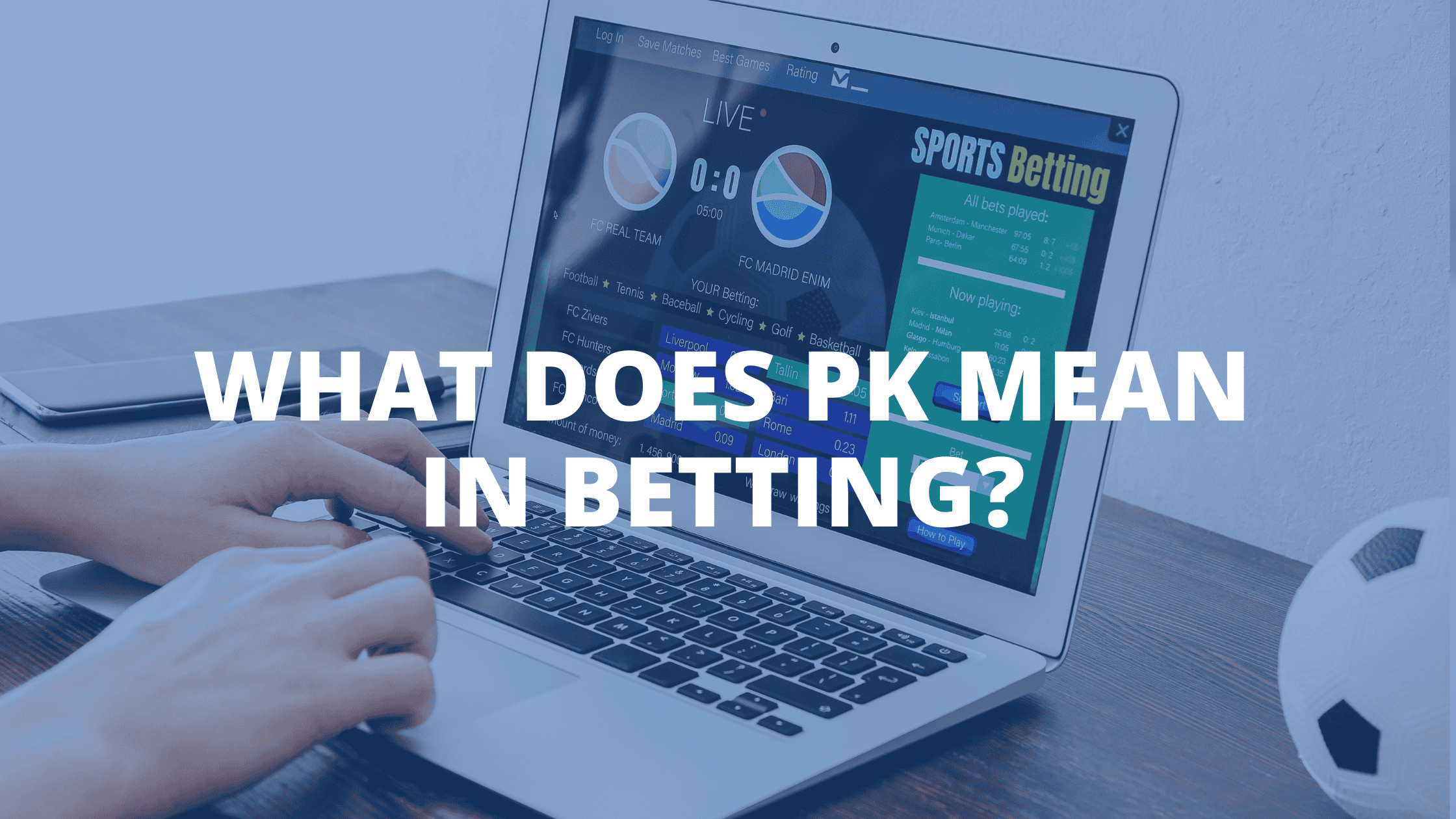The world of sports betting is brimming with exciting opportunities, but it can also feel like a language all its own. Abbreviations like “PK” often leave newcomers scratching their heads. But fear not, aspiring bettors! This comprehensive guide will crack the code of “PK” and explain its significance in the realm of sports betting.
In simpler terms, PK stands for “pick” or “pick’em.” But what does that mean when placing a bet? Buckle up, because we’re about to delve into the fascinating world of PK betting lines and how they can impact your wagers.
Here’s a sneak peek of what you’ll learn:
- The Significance of PK: We’ll explore why “PK” exists and when it’s used in sports betting.
- Farewell Point Spreads: Discover how PK betting removes the point spread equation, simplifying the process of picking the winner.
- Beyond the Basics: We’ll go beyond the core definition, exploring the implications of PK bets for both novice and experienced sports bettors.
Whether you’re a casual fan dipping your toes into sports betting or a seasoned pro seeking a refresher, this guide will equip you with the knowledge to confidently navigate the world of PK bets. So, let’s get started and unlock the secrets of this intriguing betting concept!
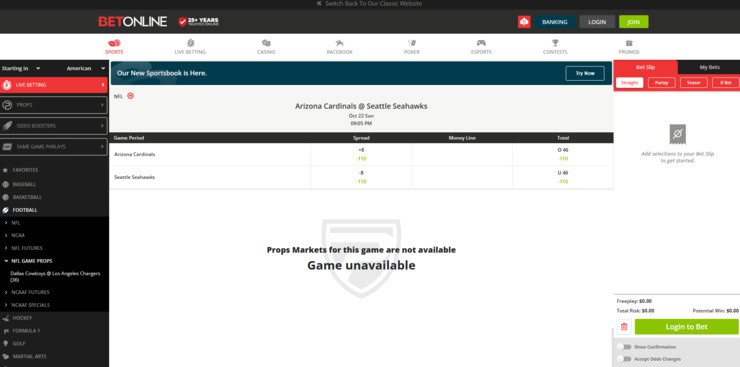
What is the Basis of PK Bets in Sports Betting?
In the realm of sports betting, navigating the various wagering options can feel like deciphering a secret code. Terms like “point spread” and “PK” (pick’em) get thrown around, leaving newcomers scratching their heads. But fear not, aspiring bettors! This section will delve into the fascinating connection between point spreads and PK bets, providing a clear understanding of how they work together.
Imagine a typical sports betting scenario where a clear favorite and an underdog face off. To create a balanced playing field and entice wagers on both sides, sportsbooks introduce point spreads. These spreads essentially “handicap” the stronger team by subtracting points from their final score (e.g., Team A -7) and awarding points to the underdog (e.g., Team B +7). This allows you to bet on whether the favorite will win by more than the designated spread (Team A -7 wins by 8 or more points) or if the underdog will either win outright or lose by less than the spread (Team B wins or loses by 6 or fewer points).
Now, enter the intriguing world of PK bets. Here, the concept of a point spread gets tossed out the window. Instead, a PK bet signifies a situation where the sportsbook perceives the matchup between two teams to be entirely equal. There’s no point spread to factor in, no “handicap” for either side. It’s a level playing field. But how does this connect back to point spreads?
Think of a PK bet as a specific scenario within the broader concept of point spreads. In a traditional point spread bet, there’s always a designated number of points separating the favorite and the underdog. However, in a PK bet, that number shrinks to zero. Essentially, it’s like saying the favorite is favored by…well, nothing! Both teams are seen as having an equal chance of winning, regardless of the margin.
This connection between point spreads and PK bets highlights the adaptability of sports betting odds. Point spreads provide a framework for most wagers, but when the matchup appears to be a complete toss-up, sportsbooks offer PK bets as a way for bettors to wager on the outright winner without the point spread complication.
Understanding this connection empowers you to make informed decisions. If you encounter a matchup where a point spread is offered, but it’s incredibly narrow (e.g., Team A -1, Team B +1), it suggests a close game. This might be a situation where a PK bet is also available, offering an alternative way to wager on the winner without the pressure of predicting the exact margin of victory.
Remember, the world of sports betting thrives on competition and uncertainty. Point spreads and PK bets are tools used by sportsbooks to create a balanced wagering environment, catering to both those who enjoy the challenge of predicting the margin of victory and those who prefer a simpler approach of picking the outright winner. By understanding the connection between these two concepts, you’ll be well-equipped to navigate the exciting world of sports betting and make informed wagers.
What Does PK Mean in Betting?
In the fast-paced world of sports betting, PK, or Pick’em, signifies a scenario where the sportsbook perceives the matchup between two teams to be entirely equal. This stands in stark contrast to point spreads, a prevalent betting format where oddsmakers assign a point advantage or disadvantage to a team (e.g., Team A -7 points, Team B +7 points) to create a balanced wagering environment.
Traditionally, point spreads are employed when there’s a clear favorite and an underdog. The point spread aims to level the playing field and entice bets on both sides. However, PK emerges when expert oddsmakers at sportsbooks struggle to identify a clear favorite. This can happen due to several reasons:
- Closely Matched Teams: Sometimes, teams boast similar recent performances, head-to-head records, and overall strengths, making it difficult to predict a dominant winner.
- Injuries or Suspensions: The absence of key players due to injuries or suspensions can significantly impact a team’s performance, throwing the matchup into uncertainty.
- Unfamiliar Territory: For relatively new teams or those playing in unfamiliar venues, predicting a clear favorite can be challenging, leading to a PK scenario.
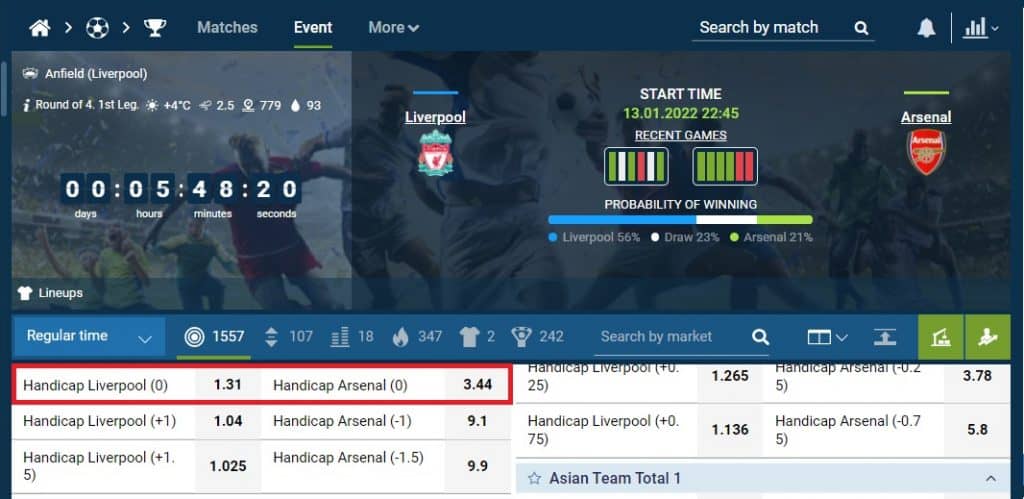
PK Bet Example: Golden State Warriors vs. Los Angeles Clippers
Here’s a detailed example of a PK bet using a hypothetical matchup between the Golden State Warriors and the Los Angeles Clippers. The NBA season is nearing its end, and both the Warriors and Clippers are vying for a high playoff seed. Both teams boast All-Star caliber players and have been playing well throughout the year.
Looking at the betting board, you see the following line for the Warriors vs. Clippers game:
- Golden State Warriors PK Los Angeles Clippers
- Both teams have odds of -110 (even money) to win.
What the PK Line Means
This PK line signifies that the oddsmakers consider this matchup to be extremely close. They don’t see a clear favorite and believe either team has an equal chance of winning.
Placing a PK Bet
Let’s say you strongly believe the Warriors will win due to their recent hot streak and home-court advantage. You decide to place a PK bet on the Warriors:
- You wager $100 on the Warriors to win.
Outcomes
- Warriors Win: If the Warriors win the game by any margin (even by one point), your bet wins. You’ll receive your initial wager of $100 back along with your winnings, which will also be $100 (due to the -110 odds). Therefore, your total payout would be $200.
- Clippers Win or Tie: If the Clippers win the game or the game ends in a tie (highly unlikely in the NBA), your PK bet will lose. You would forfeit your initial wager of $100.
Key Points
- In this PK bet example, the margin of victory for the Warriors doesn’t matter. All that matters is that they win the game outright for your bet to be successful.
- The even-money odds (-110) for both teams reflect the perceived closeness of the matchup.
Best Sports for PK Betting
PK (Pick ‘Em) bets are most suitable for sports where close games and ties are relatively common. Here’s a breakdown of the top contenders and why they shine for PK bets:
Soccer Betting
In soccer, ties (draws) occur much more frequently compared to other sports like basketball or football. This makes PK bets a viable option for many matches, especially when the teams are evenly matched.
Soccer games typically have lower scores compared to high-scoring sports like basketball. This means the margin of victory is often narrow, making PK bets a more relevant choice as the point spread becomes less significant.
American Football (NFL)
NFL defenses can be highly effective, leading to close games where the final score hinges on a crucial play or turnover. This creates scenarios where PK bets are appropriate for matchups between evenly-matched teams.
Factors like field position and weather conditions can significantly impact the outcome in the NFL. A strong kicking game or unexpected weather changes can swing the momentum of a close game, making PK bets a viable option for these unpredictable situations.
Baseball (MLB)
Dominant pitching performances can lead to low-scoring games in MLB. When two stellar pitchers face-off, a PK bet is a suitable choice as the outcome might hinge on a single run or a clutch hit.
The performance of a team’s bullpen can be unpredictable, especially late in the season. If both teams have reliable starting pitchers but shaky bullpens, a PK bet reflects the uncertainty of who might win a close game.
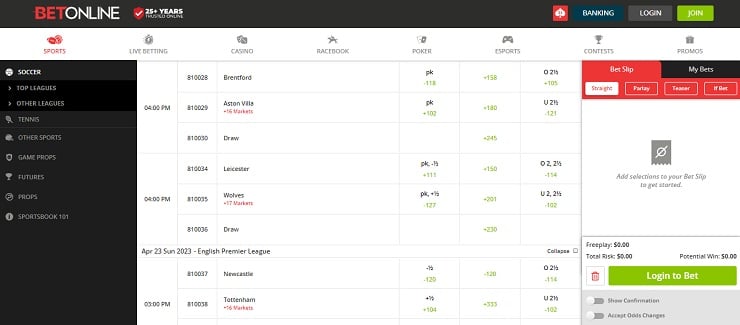
The Advantages and Disadvantages of PK Bets
The world of sports betting offers a thrilling arena to test your knowledge and intuition. But with a plethora of betting options, navigating the complexities can be daunting. Enter PK bets (pick’em bets), a unique wager that throws a curveball at traditional point spread betting. Here, we’ll delve into the advantages and disadvantages of PK bets, equipping you to make informed decisions and develop a winning sports betting strategy.
Advantages of PK Bets
- Ideal for Close Matchups: PK bets shine in situations where teams are evenly matched. This is common in sports like soccer (PK soccer bets are quite popular) where draws are frequent. By eliminating the point spread, you focus solely on picking the team wins, potentially avoiding the complexities of predicting a specific spread margin.
- Reduced Risk of Point Spread Miscalculations: Point spread bets involve predicting the winning team and the margin of victory. Misjudging the spread, even by half points, can result in a losing bet. PK bets eliminate this risk, simplifying the process for newcomers and experienced bettors alike.
- Potential for Higher Payouts: In some instances, PK bets can offer better odds compared to moneyline bets, especially when a slight favorite emerges. This is because the sportsbook considers the matchup a toss-up, potentially leading to more attractive payouts for the winning pick.
Consider these examples
Denver Broncos vs. Las Vegas Raiders (NFL game): Imagine a scenario where the Denver Broncos and Las Vegas Raiders have a PK line. Here, the sportsbook views them as having an equal chance of winning. If you possess strong sports expertise and believe the Broncos have a slight edge, a PK bet might offer better odds compared to a money line bet on the Broncos (which would likely have lower odds due to their favoritism).
Disadvantages of PK Bets
- Limited Applicability: PK bets are not suitable for every matchup. They are most relevant in close games where a clear favorite is absent. In situations with a dominant team, a money line or point spread bet might be more strategic.
- No Payout on Ties: Unlike some other bet types, PK bets result in a push (refund) if the game ends in a draw. This can be frustrating, especially if you correctly predicted the winning team but the game doesn’t go their way.
- Higher Risk Compared to Moneyline Bets in Certain Scenarios: While PK bets can offer better payouts than moneyline bets in some cases, the opposite can also hold. If the sportsbook assigns slightly different odds to each team in a PK bet (e.g., PK -115 for Team A, PK -120 for Team B), you might be getting worse odds than a traditional moneyline bet, especially if your chosen team has the higher PK odds.
Here’s an example to illustrate
New York Knicks vs. Boston Celtics (NBA game): The Knicks might have a PK line of -120, while the Celtics have a PK line of -110. While it’s a PK bet, the Celtics have slightly better odds. If you strongly favor the Knicks, a moneyline bet on them might offer a better payout compared to the PK bet with less favorable odds.
How Do the Odds Work in PK Betting?
The world of sports betting offers a thrilling challenge, but navigating the complexities of odds can feel like deciphering a secret code. PK (pick’em) bets, in particular, present a unique scenario where point spreads are thrown out the window. However, understanding the odds in PK bets is crucial to making informed wagers. Let’s delve into the intricacies of PK odds and how they influence your betting decisions.
Unlike traditional point spread bets where oddsmakers assign a point advantage or disadvantage to a team, PK bets focus solely on predicting the winning team. This eliminates the need to factor in the margin of victory, simplifying the odds structure.
PK Odds
In a classic PK bet, both teams might have the same odds (e.g., PK -110). This signifies that the sportsbook perceives the matchup as a complete toss-up, with each team having an equal chance of winning. However, this isn’t always the case.
Nuances of PK Odds
- Slight Favorites: Sometimes, sportsbooks might assign slightly different odds to each team in a PK bet. For example, you might see PK -115 for Team A and PK -120 for Team A. This suggests a slight lean towards Team B, reflected in their slightly lower odds.
- Shifting Odds: PK odds, like any other betting line, are dynamic and can fluctuate based on factors like injuries, recent performance, and even betting public movement.
Understanding the Implications
The specific PK odds presented by the sportsbook significantly impact your potential payout. Here’s a breakdown:
- Equal Odds, Higher Payout (Potential): If both teams have the same PK odds, there’s a chance the payout might be slightly higher compared to a moneyline bet on a slight favorite. This is because the sportsbook considers it a true toss-up, potentially offering a better return for picking the winning team.
- Unequal Odds, Lower Payout (Potential): If the sportsbook assigns slightly different odds to each team, you might be getting a lower payout compared to a traditional money line bet, especially if your chosen team has the higher PK odds.
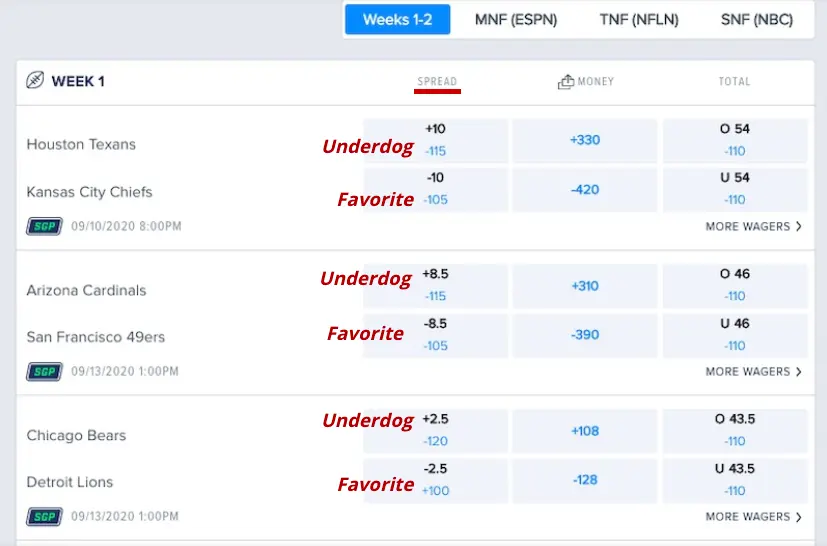
Making Informed Decisions
Knowing how PK odds function empowers you to make smarter wagers:
- Compare PK Odds to Moneyline Odds: Analyze the moneyline odds offered alongside the PK line. If there’s a slight favorite with a significant difference in moneyline odds compared to the PK odds for your chosen team, a moneyline bet might offer a better payout.
- Factor in the Risk of Draws: Is the sport known for frequent draws? If so, consider the possibility of a push (refund) with a PK bet. A moneyline bet might be preferable if draws are uncommon and you strongly favor one team.
- Don’t Chase High Odds: While higher PK odds can be tempting, prioritize picking the team you genuinely believe will win. Chasing high odds for a team you’re unsure about can lead to losses.
The world of PK odds adds another layer of strategy to sports betting. By understanding how they work and their relationship with other betting lines, you can make informed decisions. Remember, thorough research, considering the risk of draws, and avoiding solely chasing high odds are key to maximizing your success with PK bets. With a well-rounded strategy, you can navigate the world of PK betting odds with confidence.
What are the Factors to Consider When Placing a PK Bet?
While PK (Pick ‘Em) bets offer the seemingly simple task of picking the winner, informed decision-making is crucial for maximizing your potential return. Let’s delve deeper into 5 key areas to consider before placing a PK bet.
Recent Form and Trends
- Offensive and Defensive Efficiency: Look beyond just wins and losses. Analyze how each team has been performing offensively (points per game, field goal percentage, three-point shooting) and defensively (points allowed per game, opponent field goal percentage). Are there any significant changes in their offensive or defensive schemes recently?
- Strength of Schedule: Consider the quality of competition each team has faced recently. Has one team been playing a gauntlet of tough opponents, while the other has enjoyed a softer schedule? This context can help adjust for potential discrepancies in recent form.
- Momentum Swings: Are either team riding a hot streak or coming off a string of losses? Teams with winning momentum can be more confident and cohesive, while those on losing streaks might be struggling mentally and tactically.
Player Matchups
- Individual Player Performance: Research how key players have been performing against similar opponents in the past. Does one team have a clear advantage in a critical matchup (e.g., a dominant center facing a smaller team)?
- Team Chemistry and Coaching Adjustments: How well are each team’s players gelling together offensively and defensively? Has either coach made tactical adjustments to exploit weaknesses in the other team? Evaluating these factors can reveal potential mismatches or strategic advantages.
- Injury Updates and Suspensions: Injuries, even to seemingly less crucial players, can disrupt a team’s rotation and overall performance. Stay updated on any last-minute injury reports or suspensions that might significantly alter the playing field.
Home-Court Advantage
- Crowd Noise and Energy: A raucous home crowd can create a significant advantage, potentially affecting the opponent’s free throw shooting, shot selection, and overall focus. Analyze historical data to see how each team fares at home versus on the road.
- Travel and Fatigue: Consider the travel distance and schedule demands for each team. A team playing their fourth game in seven nights on the road might be physically fatigued compared to a well-rested team playing at home.
- Familiarity with the Arena: Playing on a familiar court with specific lighting, basket height, and even floor conditions can provide a subtle psychological advantage for the home team.
Line Movement and Public Perception
- Sharp Money vs. Public Money: Monitor how the PK line is shifting. When professional gamblers (sharp money) place significant bets on one side, it can cause the odds to move more dramatically than public betting. Analyze these movements alongside public betting trends to see if there’s a potential disconnect in how the game is being valued.
- Overreactions and Value Betting: Sharp bettors often exploit overreactions in the market. If the line shifts heavily towards one team due to a recent win or loss, there might be an opportunity for value betting on the other team if you believe the initial line was more accurate.
- Availability of Live Betting: Utilize live betting options if available. As the game progresses, the PK line might adjust based on the score and the teams’ performance. This can present opportunities to capitalize on changing momentum or unexpected developments.
Betting Value vs. Perceived Value
- Hidden Factors: Consider any news beyond the on-court action that might affect a team’s performance. Are there internal team issues, coaching changes, or travel fatigue impacting a team’s focus and preparation?
- Motivation and Focus: How motivated are each team for this specific matchup? Is it a crucial game for playoff seeding or a meaningless late-season game? A team with more riding on the outcome might be more focused and determined to win.
- Shop Around for the Best Odds: Don’t just settle for the first PK line you see. Compare odds across different sportsbooks to find the one offering the most favorable payout for your chosen team. Every percentage point counts when it comes to maximizing your potential return.
By delving deeper into these considerations, you can develop a more sophisticated approach to PK betting. Remember, even though PK bets are placed on the winner, the research and analysis involved should be just as thorough as for any other type of wager. A well-informed decision will put you in a better position to capitalize on these close matchups and potentially turn a profit.
PK Bet vs. Other Betting Types
PK Bet vs. Moneyline Bet
While both PK bets and moneyline bets involve picking the outright winner of a game, there are some key distinctions between them. Here’s a detailed comparison to help you navigate these betting options:
Concept
- PK (Pick’em): A PK bet signifies a situation where the sportsbook perceives the matchup between two teams to be entirely equal. There’s no point spread involved.
- Moneyline: A moneyline bet allows you to wager on the team you believe will win the game outright, regardless of the margin of victory.
Point Spread
- PK: The point spread in a PK bet is zero. Both teams are seen as having an equal chance of winning by any margin.
- Moneyline: Moneyline bets don’t involve a point spread. You’re simply betting on the winner.
The outcome of a Tie
- PK: If the game ends in a tie (draw), your PK wager is refunded by the sportsbook. Since there’s no point spread to consider, a tie doesn’t favor either team.
- Moneyline: A tie in a money line bet typically results in a loss of your wager. Neither team fulfills your prediction of winning outright.
Odds Presentation
- PK: The odds for a PK bet might be displayed differently than a traditional moneyline bet. You might see both teams with the same odds (e.g., -110) because the sportsbook considers them equally likely to win.
- Moneyline: Moneyline bets typically present separate odds for the favorite (higher odds with a “+” sign) and the underdog (lower odds with a “-” sign). This reflects the perceived difficulty of each team winning.
Scenarios for Each Bet
- PK: Ideal for close matchups where teams have similar recent performances, and head-to-head records, or are playing in unfamiliar environments.
- Moneyline: Applicable to a wider range of matchups, including those with clear favorites and underdogs.
Choosing Between PK and Moneyline
- PK: Choose a PK bet when you believe the teams are evenly matched and a tie is a possibility. You get your wager refunded in case of a tie, mitigating risk.
- Moneyline: Opt for a moneyline bet when you have a strong opinion of the winner, especially if there’s a clear favorite with lower odds.
Understanding PK and money line bets empowers you to make informed decisions when encountering situations where the sportsbook perceives a balanced matchup or a clear favorite and underdog. Consider the specific circumstances of the game and your predictions when choosing between these betting options.
Point Spread vs. PK Bet
The world of sports betting offers a thrilling arena to test your knowledge and intuition, but the terminology can be confusing. Two common options, point spread bets and PK (pick’em) bets, might seem similar at first glance. However, they differ significantly in how they approach the game and your potential winnings. Here’s a breakdown to help you choose the right bet for you.
Point Spread Bet
- Concept: This is the most popular sports betting format. Sportsbooks assign a point advantage (negative spread) to the favorite and a point disadvantage (positive spread) to the underdog.
- Focus: You’re not just picking the winner, you’re also predicting the margin of victory.
- Example: In an NFL game, the Denver Broncos might be favored by 7 points (DEN -7) against the Las Vegas Raiders (LV +7). This means the Broncos need to win by more than 7 points for your bet to win. If they win by exactly 7 points, it’s a push (refund). If the Raiders win or lose by 6 or fewer points, your bet on the Raiders wins.
- Outcome on a Tie: Not applicable. There’s no concept of a tie in point spread bets.
- Odds Presentation: Separate odds are displayed for both teams. The favorite will have lower odds (e.g., -110) due to the perceived advantage, while the underdog will have higher odds (e.g., +120) to entice bets.
PK Bet
- Concept: This signifies a situation where the sportsbook views the matchup as a complete toss-up. There’s no point spread involved.
- Focus: You’re simply picking the outright winner. The margin of victory doesn’t matter.
- Example: In a soccer game, both Manchester United (MU) and Liverpool (LIV) might have a PK line. This suggests the sportsbook believes both teams have an equal chance of winning, regardless of the score.
- Outcome on a Tie: If the game ends in a draw, your bet is typically refunded (push).
- Odds Presentation: Odds for both teams in a PK bet might be the same (e.g., PK -110) or slightly different, reflecting a perceived slight favorite.
Choosing Between Point Spread and PK Bets
Here are some key factors to consider when deciding between a point spread bet and a PK bet:
- Matchup Closeness: Point spreads are ideal for games with a clear favorite and underdog. PK bets are often used for close matchups where a draw is a possibility.
- Risk vs. Reward: Point spreads offer the potential for higher payouts if you correctly predict both the winner and the margin of victory. However, they also carry a higher risk of losing your bet. PK bets are simpler and less risky, but the potential payouts might be lower.
- Confidence in Margin Prediction: If you’re confident about the winner and the margin of victory, a point spread bet can be a good choice. If you’re unsure about the margin but have a strong opinion on the winner, a PK bet might be a safer option.
Understanding both point spread bets and PK bets empowers you to make informed decisions when placing your wagers. Consider the specific matchup, your risk tolerance, and your confidence in predicting the margin of victory to choose the bet that best suits your strategy. Remember, responsible betting is key, so always wager what you can afford to lose.
Conclusion
Whether PK (pick’em) betting becomes your go-to wagering option depends on your individual preferences, risk tolerance, and betting goals. Its appeal lies in its simplicity. PK bets offer an even-money payout structure, making them accessible for both novice and experienced bettors. If you favor straightforward wagers that focus solely on picking the winning team and avoid the complexities of point spreads, then PK betting might be a perfect fit for your betting style.
However, it’s important to acknowledge that while PK bets offer a balanced risk-reward ratio, they may not yield the same level of potential profit compared to other bet types. Remember, success in PK betting still hinges on diligent research, discipline, and a deep understanding of the sports and teams you’re wagering on.
Ultimately, the suitability of PK betting lies within your overall betting strategy and your willingness to embrace its inherent simplicity and potential for more modest payouts. So, the next time you encounter a PK line, weigh the matchup, consider your risk tolerance, and decide if a straightforward pick on the winning team aligns with your betting goals.
FAQs
What does PK mean in betting?
PK, which stands for Pick’em in sports betting, signifies a situation where the sportsbook views two teams as evenly matched. This is common in soccer betting but can occur in other sports like NFL games or NBA matchups.
How do you win a PK bet?
To win a PK bet, you must correctly predict the winning team. Unlike point spread bets where you consider the margin of victory, PK bets only care about the final winner.
Does PK mean draw no bet?
No, PK and “draw no bet” are not the same. In a PK bet, a tie (draw) results in your wager being refunded. A “draw no bet” option, on the other hand, specifically excludes the possibility of a tie and only returns your bet if the game ends in a draw.
What does PK 110 mean?
PK 110 indicates a PK bet where both teams have the same odds (in this case, -110). This suggests the sportsbook considers them equally likely to win.
 ES
ES 
